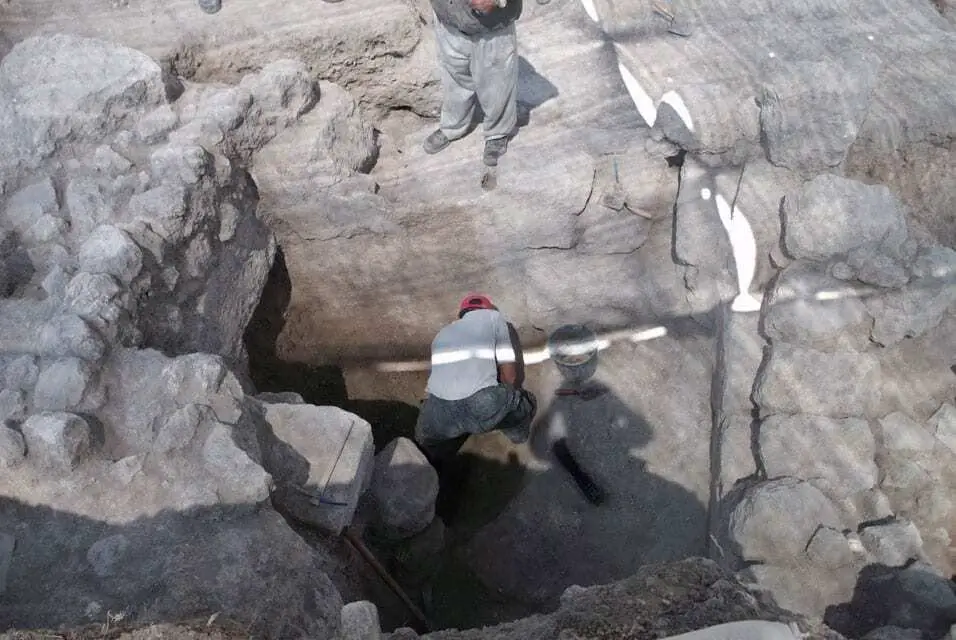Archaeologists have excavated a ritual bath from the period of the 2n’d Temple Period at Kibbutz Zor’a.
The bath from the first-century BCE-first century CE was discovered by a team of archaeologists from the Israel Antiquities Authority whilst conducting archaeological works for the construction of a waterline.
The excavation revealed a square structure that has three walls treated with a thin layer of plaster that facilitated the storage of water. A channel used to drain water into the ritual bath was installed in a corner. In addition, a plaster floor and three stairs that descend from it to the west (toward the hewn openings in the bedrock) were exposed.
According to archaeologist Pablo Betzer, excavation director on behalf of the Israel Antiquities Authority, “This is the first time that any remains dating to the Second Temple period have been exposed in this region. We knew from the Talmud and from non-Jewish sources that on this ridge, as in most of the Judean Shephelah, there was an extensive Jewish community 2,000 years ago that existed until the destruction of the Temple in 70 CE. Yet despite the many surveys and excavations that have been carried out to date no remains from this period have been discovered so far.” According to Betzer the name of the Jewish settlement that the ritual bath belonged to is still unknown.
Mekorot reports that the building was discovered while modernizing the water supply system first built in the 1950s in the region between Kfar Uriyya and Moshav Yish’i, in a project slated to cost 20 million NIS. During the course of all the infrastructure work Mekorot fully cooperated with the Israel Antiquities Authority out of a commitment to the values of tradition and history.
Mekorot also stated that the discovery will not affect the project’s timetable and that the work will be completed on schedule. In order to preserve the discovery Mekorot has agreed to change the location of the slated water line.
Israel Antiquities Authority
Header Image Credit : Israel Antiquities Authority





